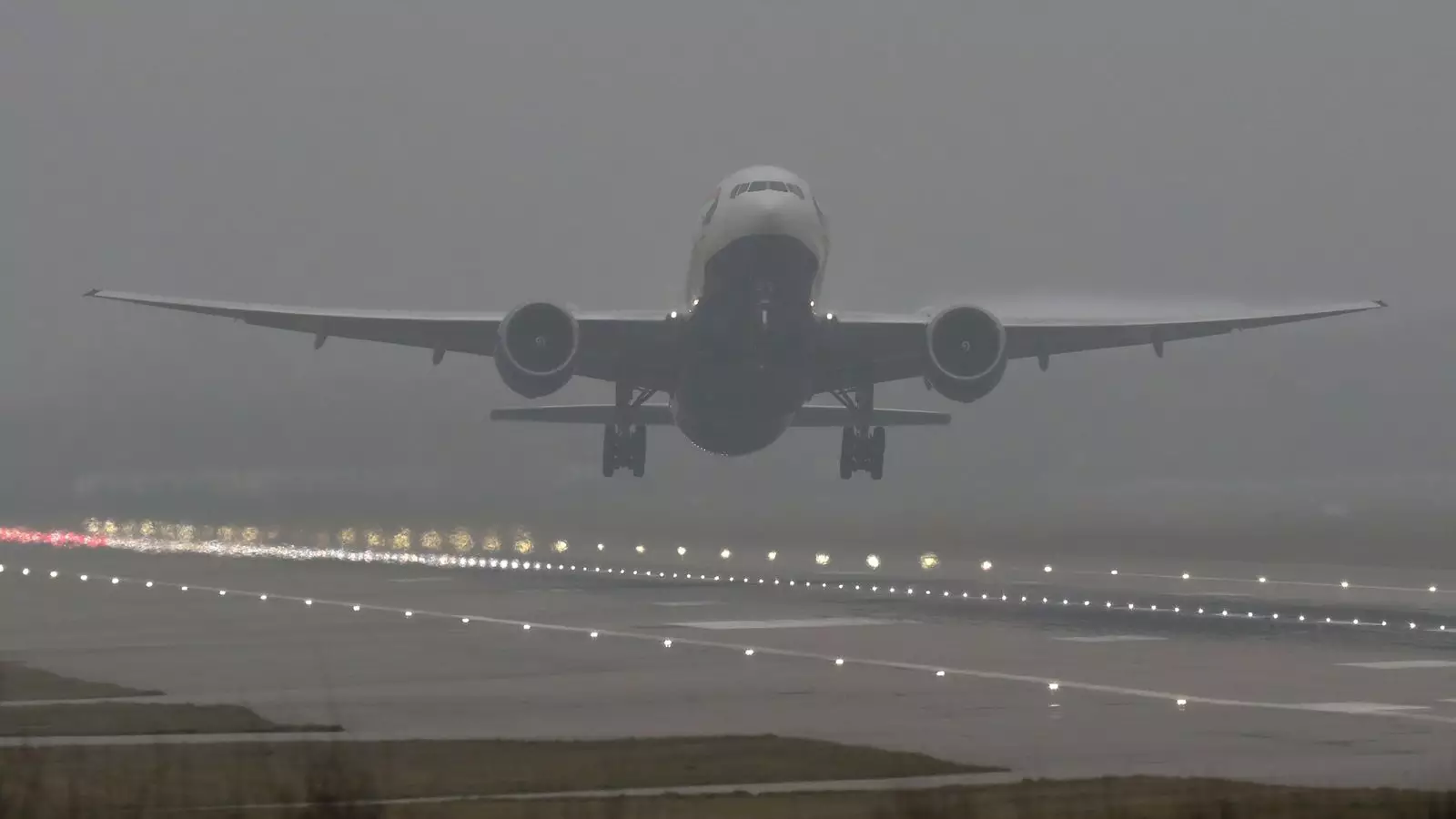In recent days, the UK has been grappling with severe fog that has led to significant disruptions across its air travel system, highlighting the broader implications of weather conditions on transportation. While flights at major airports like Gatwick, Heathrow, and Manchester have faced cancellations and delays, drivers on the road are also contending with reduced visibility, emphasizing the need for caution. This article explores the ramifications of the persistent fog, the responses from relevant authorities, and the challenges posed to travelers and drivers alike.
Reports indicate that as many as 20,000 passengers found their travel plans thwarted last Friday, which underscores the severity of the situation at UK’s major airports. According to Simon Calder, a travel journalist, airports like London City, Heathrow, and Gatwick experienced a notable number of cancellations and delays, affecting travelers’ schedules significantly. The National Air Traffic Services (NATS) has been proactive, implementing temporary restrictions aimed at safeguarding the health and safety of both passengers and flight crews. It is worth noting that these restrictions are rarely a matter of choice but rather a necessary response to low visibility conditions.
Mysterious tubes of fog reduced visibility to as little as 100 meters, particularly in the Southeast and central England, which not only poses a challenge for air traffic but also for road users. Over the weekend, this issue has persisted, causing authorities to issue warnings for both air and land travel, suggesting that patients’ and drivers’ understanding of the conditions can mitigate risks.
The impact of heavy fog extends beyond the runways of airports; it also has significant consequences for road transport. The Met Office has urged motorists to adjust their driving habits, recommending that they maintain a longer distance between vehicles and expect longer travel times. With many people taking to the roads for holiday travel, safety becomes even more critical.
As the fog blankets much of England, the conditions create heightened challenges, particularly in regions where additional weather phenomena like rain and snow may coincide. As drivers navigate through these murky conditions, maintaining awareness and adapting to changing environments can be pivotal in preventing accidents and ensuring safety.
While current forecasts do not predict the fog’s lingering presence beyond the weekend, the anticipated return of adverse weather conditions, including rain and wind, may compound the difficulties faced by travelers. The Met Office has noted the likelihood of further weather warnings, emphasizing the need for continuous monitoring of atmospheric conditions.
Travelers are strongly encouraged to remain vigilant by checking flight statuses prior to departing for airports. While some airports like Gatwick are bracing for a busy period with multiple flights planned, passengers should be prepared for delays, as the impact of the fog may still linger even as visibility starts to improve.
Moreover, as some areas brace for heavy rainfall when looking ahead to New Year’s celebrations, this presents potential complications for major events such as Edinburgh’s Hogmanay festivities. In this context, organizers have advised attendees to prepare for every eventuality, including monitoring transportation updates and dressing appropriately for the weather conditions.
The ongoing disruptions due to fog highlight the inherent vulnerabilities within transportation systems to weather conditions, pointing to a growing need for preparedness among travelers. Whether it be persistently delayed flights or dangerously foggy roads, the importance of adapting to the weather cannot be overstated.
Authorities must continue to put protocols in place to ensure passenger safety and minimize disruptions wherever possible. Furthermore, travelers should take personal responsibility for their journeys by planning ahead and remaining cautious. As we move into a new week, it is clear that the UK must remain vigilant not just in response to fog but in anticipatory measures against various weather-related challenges that may arise throughout the winter months ahead.


Leave a Reply